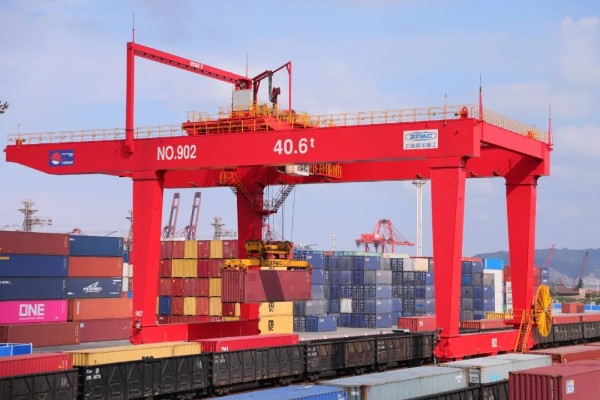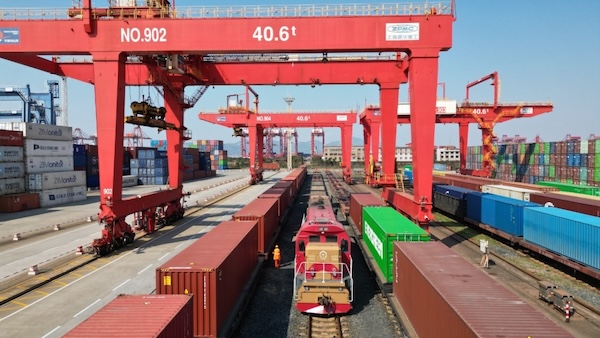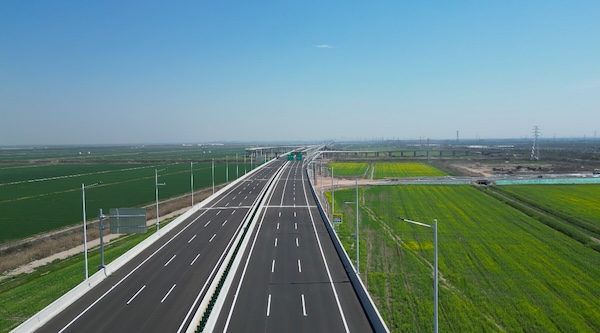Ningbo's sea-rail transportation surges in Jan-Feb

Containers stockpiled at Ningbo Zhoushan Port in East China's Zhejiang province. [Photo/WeChat account: nbfb0574]
A total of 227,500 twenty-foot equivalent units (TEUs) were transported via the sea-rail combined transportation model in Ningbo, Zhejiang province, in the first two months of this year, according to official statistics.
The figure represents a year-on-year increase of 13.31 percent, highlighting the city's growing role as a pivotal transportation hub that supports China's inland exports by leveraging its well-established sea and rail transportation network, according to the Ningbo Municipal Bureau of Transport.
The sea-rail combined transportation model refers to a process where goods are initially loaded onto trains bound for Ningbo before being shipped overseas by sea, and vice versa. Since its inception in 2009, Ningbo's sea-rail combined transportation business has expanded to cover 65 prefecture-level cities in 16 provinces, municipalities, and autonomous regions across the nation.
The transition from using freight trains instead of trucks to transport goods to ports has significantly reduced logistics costs for businesses located in the nation's landlocked cities, such as Shangrao in Jiangxi province.
Shangrao Delong Textile Co Ltd consistently exports an average of 150 containers per month, with 60 percent of these being transported via the sea-rail combined transportation model from Shangrao to Ningbo Zhoushan Port, ultimately reaching various destinations across the globe.
Jin Shuyun, a spokeswoman at the company, said, "Unlike road transportation, the sea-rail combined transportation mode contains no additional 'entry-exit fees', resulting in a 15-percent reduction in freight costs for companies."
Looking ahead, Ningbo aims to open two additional freight routes and bring its sea-rail combined transportation business to at least two more prefecture-level cities this year, with the goal of increasing the total containers transported via this method to 1.8 million TEUs.

 Ningbo seabird project seeks international volunteers
Ningbo seabird project seeks international volunteers  Jakub's journey: From shipyard to sea
Jakub's journey: From shipyard to sea  Badminton Asia COO applauds Ningbo
Badminton Asia COO applauds Ningbo 


